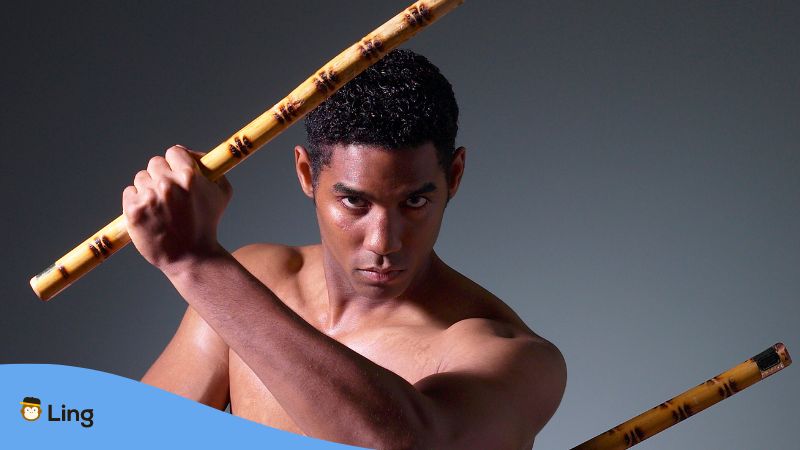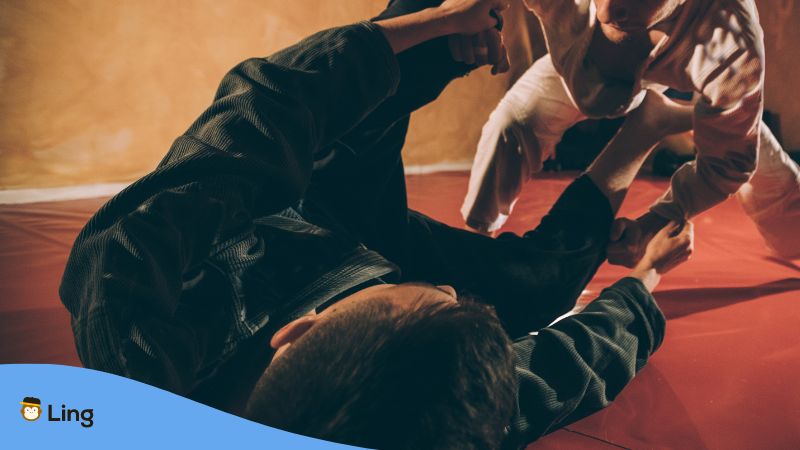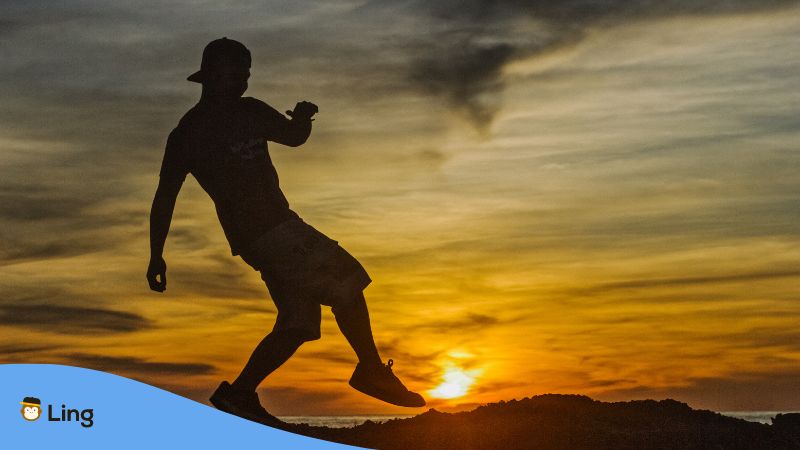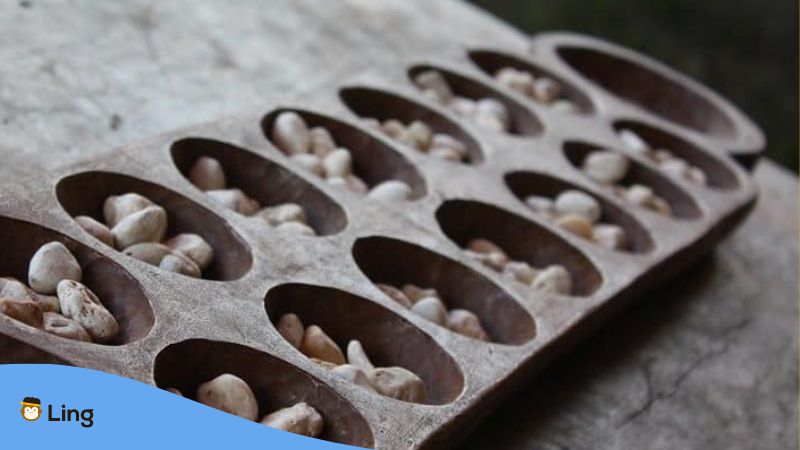Regarding sports, Filipinos have a spot in the world. So today, let’s learn about Filipino sports!
Sports, or isports in Filipino, are highly valued in the Philippines, and Filipinos tend to be very enthusiastic about participating in them. There is a wide range of sports in the Philippines; however, the top six include basketball, tennis, boxing, billiards, football, and volleyball.
Athletics, aerobics, weightlifting, and martial arts are all examples of popular sports that can be practiced as a recreation. If there’s one song that summarizes the Filipinos’ passion for sports, the SEA Games song “We Win as One” is the best choice.
In the Philippines, there is this thing called the 4 Bs of sports – Basketball, Boxing, billiards, and Bowling. But, today, we will discover more than those sports. Prepare yourself as we discover the different Filipino sports.
Brief History Of Filipino Sports
Patintero, Luksung Baka, and Chinese Garter were played, but Langit-Lupa was by far the most popular. These are called “Larong Kalye” or “street games” in the Philippines. In the past, children in the Philippines didn’t get to see professional sports, so the games they played were very simple. Here, the kids found a way to have fun and train their bodies and minds to prepare for professional sports.
Several sports were introduced to the Philippines by the Americans in the early 20th century that are now hugely popular. Over time, basketball was able to win over the hearts of every single Filipino. Since 1924, the Philippines has taken part in the Summer Olympics. Since 1972, they have also taken part in the Winter Olympics. Most of the time, Filipino athletes have done their best in swimming, boxing, and track and field.
Nowadays, the Filipino people, especially the younger generation, look forward with great anticipation to the UAAP and NCAA tournaments. These contests serve as a show of strength between the country’s top academic institutions. As opposed to the earlier (1924) establishment of the NCAA, the UAAP was founded in 1938.
What Are The Local Filipino Sports
Before we go to different sports in the Philippines, let us first learn some local Filipino sports.

1. Arnis (Eskrima)
Known as the nation’s national sport, arnis is a weapon-based combat that has been practiced since 1610. Due to the diversity of local languages in the area, it is also known as Eskrima. Arnis is a martial art that is extremely popular in the Philippines. There are lots of traditional martial arts, but Arnis is among the most popular ones, and it is also taught in schools.

2. Dumog
If you’re interested in wrestling sports, you should discover dumog. Dumog is the name for the Philippine version of traditional wrestling. The goal of dumog, a Filipino martial art that combines various techniques, is to force an opponent to the ground and hold them there. Methods of gaining control over an opponent include pulling, grasping, shoving, and pinning them.
3. Palo-sebo
Have you gone to a traditional Filipino-style fiesta? Palo-sebo is among the popular sports that are also played for recreation.
Sticky poles (often made of bamboo) are used, and a reward bag is placed on the top. The goal is to make your way to the top of the “greasy pole,” and the fastest player to do so wins the reward.
4. Sikaran
This martial arts sport has existed since the 1600s in Rizal, Philippines. Instead of hands, it is played with the feet. The “Biakid kick” is a unique move in sikaran. It aims to hit the back of the opponent’s head.

5. Sipa
Sipa, also called Takyan, is a Filipino game played before the Spanish took over the country in the 15th century. It’s a pretty hard game because you need speed, agility, stamina, and a lot of control over the ball.
The Sipa game can be played both inside and outside, like soccer. Usually, one or two people use their feet to juggle a metal washer, a ball, or a bunch of rubber bands. In English, Sipa means “kick.” It’s also what the ball used in the game is called.
Fun fact, the Sipa game was first talked about in the 1500s before Spain took over the Philippines. Sipa was made in the country and was thought to be the national sport. In 2009, Gloria-Macapagal Arroyo, president at the time, made Arnis the national sport of The Philippines. Sipa’s popularity has decreased, but Filipinos still like to play it for fun.

6. Sungka
Sungka, pronounced “Soong-kah,” is a turn-based board game for two players who try to get more stones than the other player. The game brings out a person’s desire to win. The Sungka game seems to be a game of the mind. It is also known to help people improve math and their ability to observe.
Other Famous Sports In The Philippines
1. eSports
If you’ll ask what’s one current trending sports in the Philippines, the answer is E-sports. In 2017, the Philippine Games and Amusement Board and the Office of the President officially recognized eSports as a legitimate sport in the Philippines. This lets professional eSports players get athletic licenses and gives them more freedom to play in international tournaments and represent their country.
Most of the big tournaments in the local scene are for mobile eSports and have big prize pools. Philippine eSports teams like Blacklist International Bren Esports, Execration, Neon Esports, Omega Esports, Team Pacquiao GG, and TNC Predator, to name a few, have also gained a lot of attention. The rise of eSports in schools has also made it possible to get a Bachelor of Science in Esports, which takes four years to finish.
2. Basketball
Everywhere you go in the Philippines, you’ll always see basketball courts. Take note, even not in a gymnasium; there are lots of improvised courts along the street. Why? Filipinos love basketball.
This is indeed a popular sport in the Philippines. Basketball, in particular, has gained a lot of popularity, and amateur games can be found in almost any neighborhood in the country. Gilas Pilipinas, the national team, represents the Philippines in international competitions. If Robert Jaworski is the “living legend” of modern sports, then James Yap is “the” athlete of today. Other famous basketball players are Junemar Fajardo, Allan Caidic, Alvin Patrimonio, Benjie Parras, and Ramon Fernandez.
3. Boxing
When we talk about boxing, it’s impossible not to mention Manny Pacquiao. Boxing is also a popular sport, and 38 major world champions in different weight categories have come from the country. After Manny Pacquiao did well in his job, the sport also became more popular. Pancho Villa, Flash Elorde, and Cefering Garcia are just a few of the local and international hall of farmers who were born in the Philippines.
4. Bowling
Bowling is one of the four big sports in the Philippines, and Filipinos have done very well in it. Paeng Nepomuceno and Bong Coo, both from the Philippines, were the first people to be inducted into the International Bowling Hall of Fame in 1993. Still, Filipinos have written their names on more than 100 million bowlers all over the world.
Rafael “Paeng” Nepomuceno is the best bowler in the world, and Filipinos are very proud of him. Paeng has won the titles “Greatest Filipino Athlete of All Time,” “Athlete of the Century,” and “International Bowling Athlete of the Millennium.” He has won the bowling World Cup four times in the last 30 years. He might even win his fifth in the next ten years.
5. Billiards
The next sport is billiards, and we cannot talk about billiards without mentioning the “Magician” itself, Efren “Bata” Reyes. After Spain gave the Philippines to the US in 1898, people have been playing pool there since before World War II. It didn’t reach its peak until 1999, when Filipino Efren “Bata” Reyes beat Taiwan’s Chang Hao-Ping at the World Pool Association Nine-Ball Championships in Cardiff, Wales.
It was the first time a sports final was shown on TV, and Reyes, whose nickname was “Bata”, had a lot of laid-back charm. He had worked his way up from sleeping on pool tables as a child. Today, there are pool halls in restaurants, schools, and even slums in Manila.
6. Gymnastics
Another famous sport in the Philippines lately is gymnastics. Carlos Yulo is the face of Philippine gymnastics today. He is the only Filipino athlete to have won medals at both the FIG Artistic Gymnastics World Cup Series and the World Artistic Gymnastics Championships.
Gymnastics is an extremely popular sport in so many countries and one of the most watched at events like the Olympic Games. Recently, the number of Filipinos who like this thing has gone up. This doesn’t surprise us, especially since Filipino athletes have done so well in the past.
In the past ten years, starting in 2015, the Philippines has been on the rise. Since then, the Philippines have been more likely to finish on the podium in the region, especially at the Southeast Asian Games. In the last four SEA Games, we have not only been on the podium every time, but the Philippines have also won more medals each time than we did the year before.

7. Athletics
Athletics is the eighth greatest popular game in the Philippines. The Philippine Athletics Track and Field Association, or PATAFA, is in charge of the sport. The Far Eastern Games in 1913 were the first international event that the Philippines took part in. One of the famous Filipino athletes is Lydia de Vega.
8. Volleyball
Alyssa Valdez, Dennise Lazaro, Jia Morado and Dindin Santiago. These are just a few of the famous volleyball players in the Philippines. Aside from basketball, another much-awaited event in NCAA or UAAP is the volleyball league.
You might not think that the Philippines had much to do with how volleyball is played today, but they did. In fact, the set and spike were made by volleyball players from the Philippines. Volleyball has been played in the Philippines since 1910. That year, Elwood S. Brown, who was the Physical Director of the YMCA, brought volleyball to the Philippines for the first time. People in the Philippines started playing volleyball in their backyards, and beach volleyball games soon followed, according to the Philippine Volleyball Federation (PVF).
9. Weightlifting
Just this 2020, the Philippines won its first gold medal in the Olympics. This historical win was achieved by Hidilyn Diaz in weightlifting. Weightlifting may have been overlooked five years ago. Its constant expansion has made it one of the important things in the minds of Filipinos.
Weightlifting is unique in the Philippines because it has won medals at all levels. Reaching the top three in global events is difficult but in 2015, our global weightlifting operations took form. Since then, our country has won more medals at the Southeast Asian Games, Asian Weightlifting Championships, and World Weightlifting Championships.
Now, when you think about weightlifting, you probably think of Hidilyn Diaz. Hidilyn’s historic win at the Tokyo Olympics might have been the most important sports moment in the modern Philippines.
10. Football
American football is a sport that has only been played in the Philippines for a short time. The first league was ArenaBall Philippines, which ran from 2009 to 2015. The Philippine-American Football League was started in 2016. The Philippines also puts together a national team for men. Filipinos like Eugene Amano, Tim Tebow, and Roman Gabriel have played in the National Football League in the United States. In the 2010s, the Super Bowl started to be shown on over-the-air TV, it gained more popularity in the Philippines.
11. Tennis
Nowadays, when we talk about tennis, a name will pop up in Filipinos’ minds – Alexa Eala. Tennis is a sport that gets a lot of attention from people worldwide. The Philippine Tennis League puts on competitions for both amateur and professional tennis players in the Philippines. Schools also put a lot of importance on tennis matches.
Who Are The Greatest Filipino Athletes Of All Time
| Name | Sports |
| Rafael Paeng Nepomuceno | Bowling |
| Manny Pacquiao | Boxing |
| Efren “Bata” Reyes | Pool |
| Gabriel Elorde | Boxing |
| Francisco Bustamante | Pool |
| Lydia de Vega | Athletics |
| Mansueto Velasco | Boxing |
| Hidilyn Diaz | Weightlifting |
| Eugene Torre | Chess |
| Carlos Loyzaga | Basketball |
Aside from these athletes, there are also other Filipino athletes that deserve recognition such as Alexa Eala (tennis), EJ Obiena(Men’s Pole Vaul), Yuka Saso (golf), Nonito Donaire (Boxing), Nesthy Petecio and Carlo Paalam (Boxing), Carlo Biado (Pool), Eumir Marcial (boxing), Dwight Ramos (basketball), and Margielyn Didal (skateboarding).
Vocabulary Related To Sports
| English | Filipino/Tagalog |
| athlete | atleta |
| award | premyo |
| champion | kampeon |
| competition | laban/labanan |
| compete | maglaban |
| defend | dipensahan |
| game | laro |
| judge | hurado |
| league | liga |
| lost/loss | talo |
| opponent | kalaban |
| player | manlalaro |
| strategy | estratehiya |
| tie | tabla |
| whistle | pito |
| score | puntos |
| team | koponan |
| win | panalo |
Ready … Set … Learn!

Do you like sports? Well, why not use this love for sports in learning languages like Filipino/Tagalog? With the Ling app, learning languages is like sports. You have to persevere, play games, learn, and, most of all, win. With its top-notch features, you’ll find learning languages with the Ling app very convenient and meaningful.
No need to pressure yourself with schedules because you can always call for a time out because, with the Ling app, you can learn anytime and anywhere you want. So, stand in the starting line and ring the bell. Start learning with the Ling app now!

















